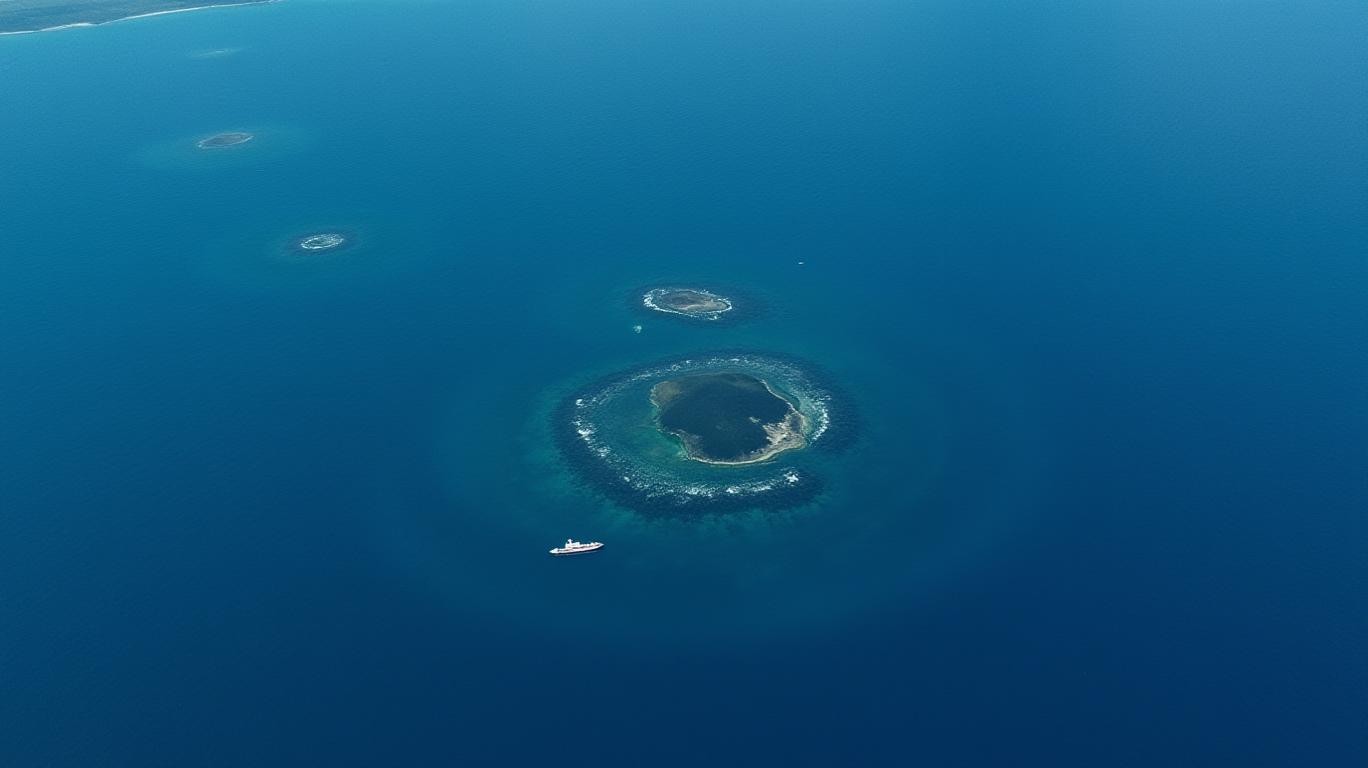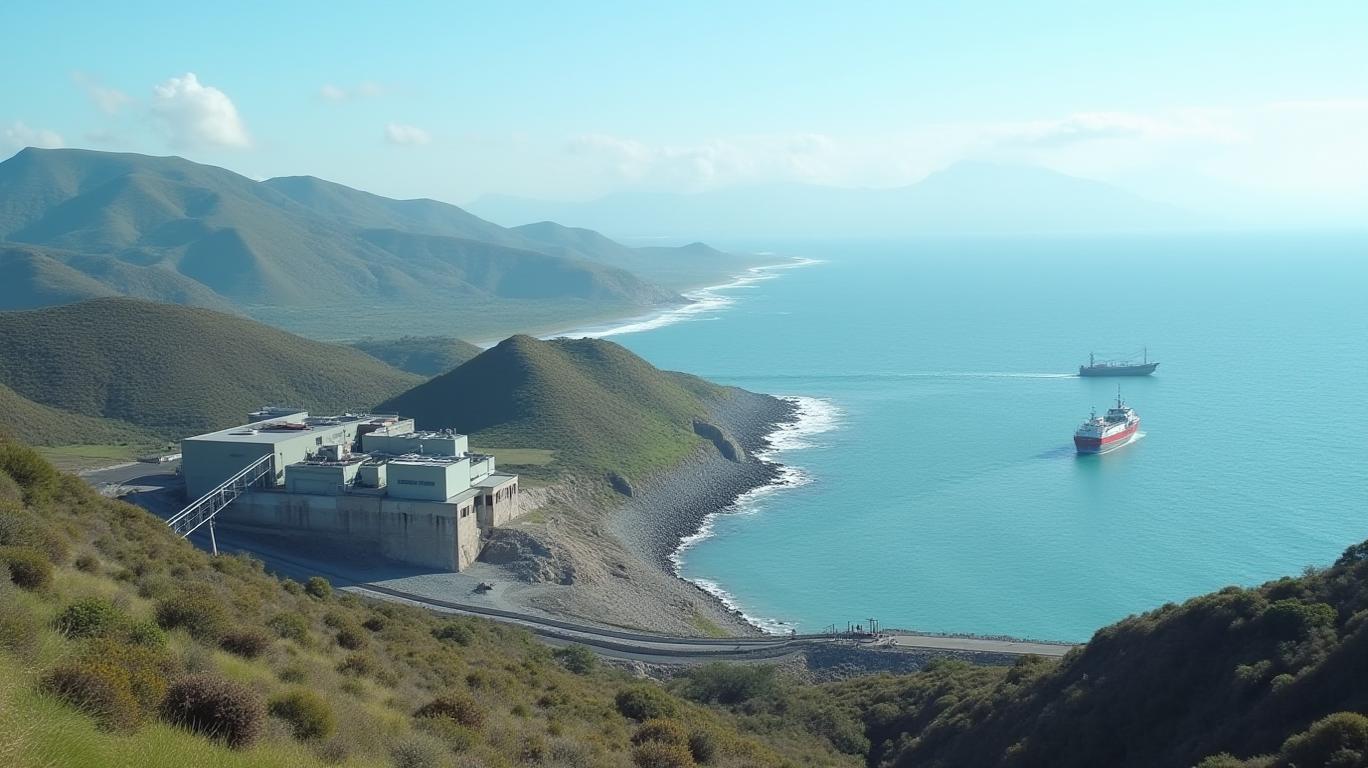Stranded at Sea: Navigating Investment Risks in Ecuador's Maritime Ecosystem
The dramatic rescue of five fishermen after 55 days adrift in the Pacific Ocean near the Galápagos Islands underscores the fragility of maritime safety and the growing environmental and regulatory challenges facing the region. This incident, occurring against a backdrop of Ecuador’s landmark Rights of Nature legal reforms, raises critical questions for investors in tourism, insurance, and maritime sectors.

The Incident and Its Immediate Implications
The fishermen’s ordeal began when their boat’s alternator failed, disabling communication and navigation systems. Stranded without power, they survived on seawater, rainwater, and raw fish—mirroring the plight of Peruvian fisherman Máximo Napa, who spent 95 days adrift in early 2025. Both cases highlight systemic risks in small-scale fishing operations: inadequate equipment maintenance, limited emergency preparedness, and reliance on rescue efforts from third parties.
For insurers, these incidents underscore vulnerabilities in maritime liability policies. The Ecuadorian tuna boat Aldo, which rescued the fishermen, likely incurred costs for fuel, crew time, and medical assistance. Investors in fishing fleets or maritime insurers should monitor policies covering third-party rescue liabilities and equipment failures.
Ecuador’s Rights of Nature Law: A Regulatory Game-Changer
In late 2024, Ecuador’s Constitutional Court ruled that marine ecosystems possess legal rights to “maintain natural life cycles and functions.” This decision, part of the nation’s pioneering Rights of Nature framework, mandates stricter restrictions on industrial fishing, pollution, and habitat disruption.
For investors, the implications are twofold:
1. Environmental Compliance Costs: Fishing operators must now adhere to tighter regulations, such as designated no-fishing zones and reduced bycatch. Non-compliance could lead to fines or operational halts, increasing risks for undercapitalized firms.
2. Litigation Risks: Vessels causing environmental harm—e.g., oil spills or illegal fishing—may face lawsuits under the new legal framework. Insurers could see rising liability claims, particularly for companies operating in ecologically sensitive areas like the Galápagos Marine Reserve.
Tourism: Balancing Growth with Conservation
The Galápagos Islands, a UNESCO World Heritage Site, welcomed nearly 330,000 tourists in 2023—a record high—and Ecuador aims to double annual visitors to 2 million by 2025. However, over-tourism threatens fragile ecosystems, with daily waste generation exceeding 28.6 tonnes and plastic pollution worsening.
Investors in tourism-related stocks or real estate near the islands must weigh growth potential against regulatory and environmental headwinds. Ecuador’s $200 per-visitor conservation fee (40% allocated to ecosystem protection) provides a partial buffer, but rising visitor numbers may strain resources.
Insurance Sector: Navigating New Risks
The stranded fishermen’s ordeal and Ecuador’s regulatory shifts create both risks and opportunities for insurers:
- Equipment Failure Coverage: Policies for fishing vessels will likely require proof of regular maintenance checks, particularly for critical systems like alternators.
- Environmental Liability: Insurers may face claims for ecological damage caused by poorly maintained boats or illegal fishing activities.
- Rescue and Repatriation Costs: Policies covering third-party rescue operations and post-rescue medical care will become standard for maritime operators.
Systemic Underwriting Adjustments
Recurring incidents like the 55-day drift suggest insurers may tighten underwriting standards for vessels operating in the Galápagos region. Investors in insurance firms should monitor underwriting criteria, including:
- Mandatory safety certifications for fishing boats.
- Exclusions for non-compliant vessels or operators.
- Higher premiums for fleets operating in ecologically sensitive zones.
Conclusion: A Region at a Crossroads
The 2025 incidents and Ecuador’s Rights of Nature law signal a pivotal moment for investors:
- Tourism: While the Galápagos’ biodiversity drives tourism revenue, unchecked growth risks ecological collapse. Investors should prioritize companies with strong sustainability practices (e.g., carbon-neutral operations or partnerships with conservation NGOs).
- Maritime Insurance: Firms like Allianz and AXA must adapt to rising liability risks. Investors may see volatility in policies covering fishing fleets, but also opportunities in specialized environmental liability insurance.
- Regulatory Compliance: Companies adhering to new regulations—e.g., using eco-friendly fishing gear or avoiding restricted zones—will gain a competitive edge.
Key statistics reinforce these trends:
- Ecuador’s marine reserves cover ~163,000 km², with over 28.6 tonnes of daily waste generated in the Galápagos.
- Tourism contributes over 5% of Ecuador’s GDP, but 8 tonnes of plastic are removed annually from its beaches—a stark reminder of systemic challenges.
For investors, the Galápagos region offers growth potential but demands a nuanced approach—balancing economic opportunities with environmental stewardship. Those who align with Ecuador’s regulatory shifts and prioritize sustainability may navigate these waters successfully.

_f86da1b01749674376692.jpeg)







